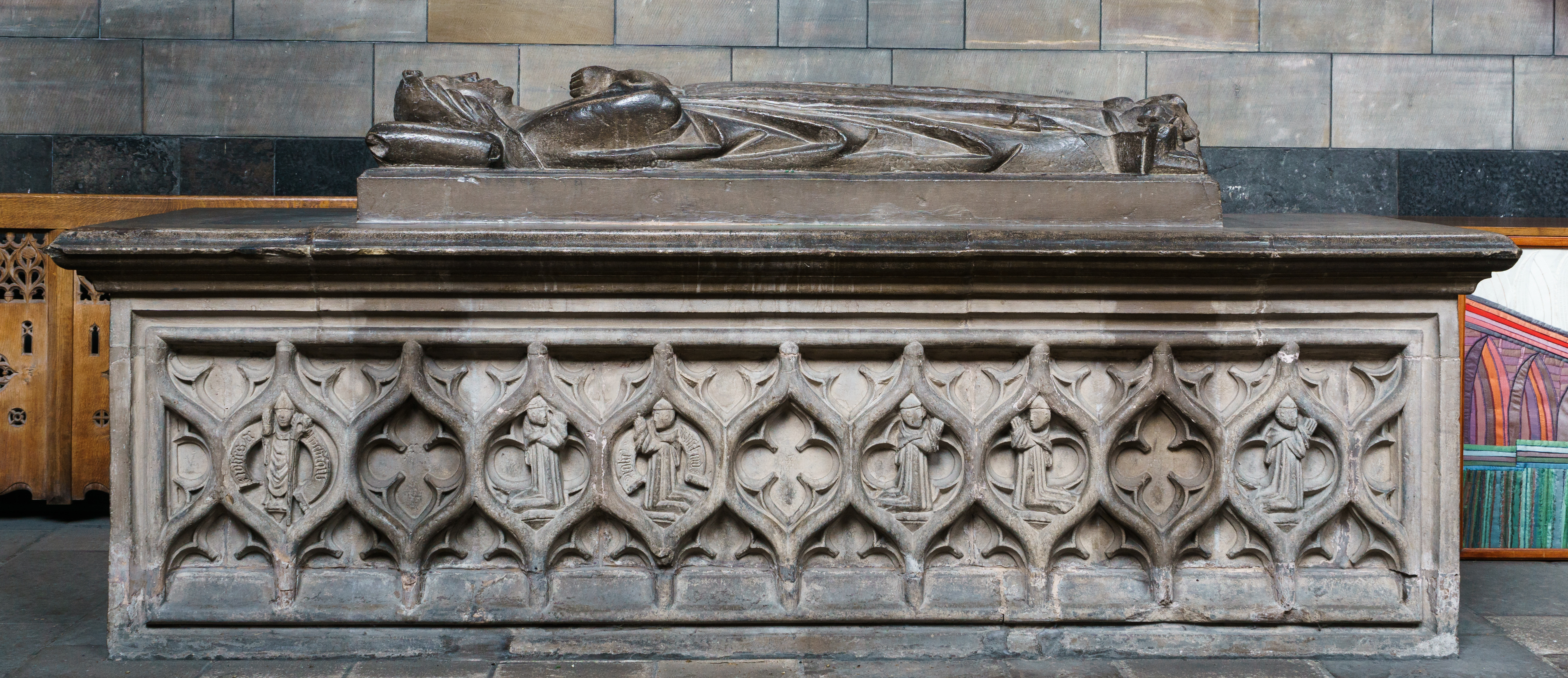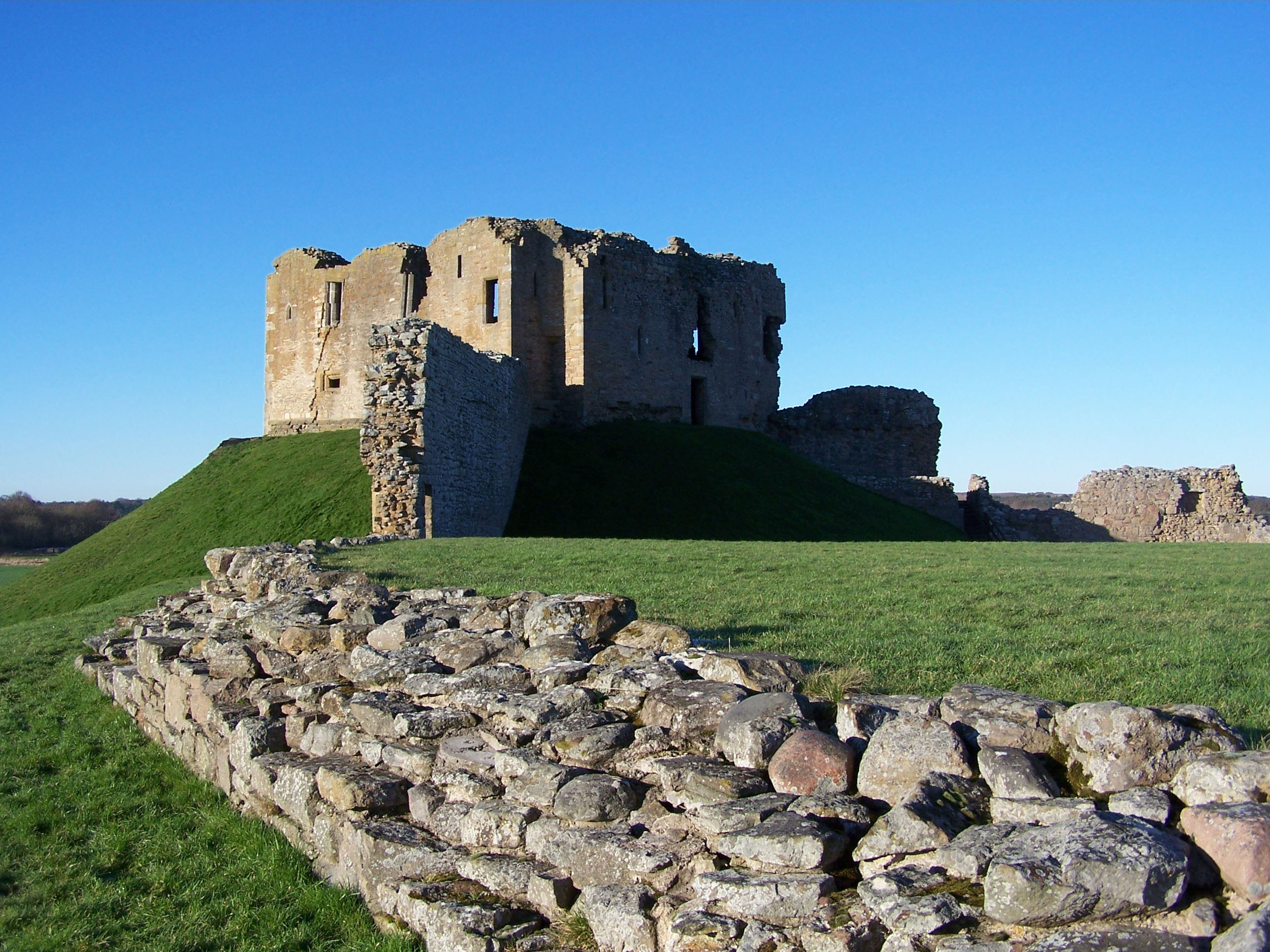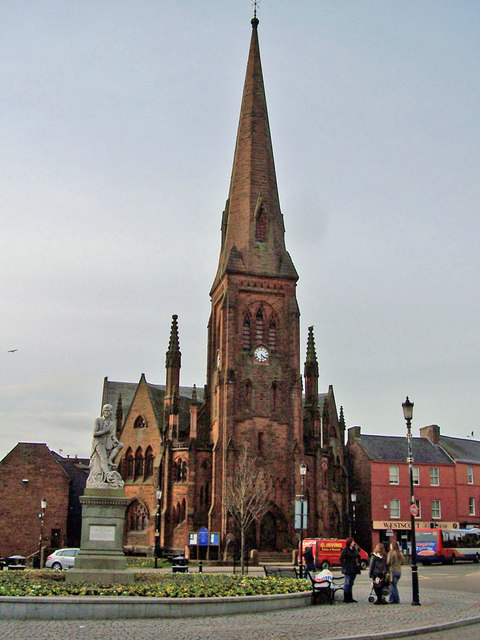|
Christina Bruce
Christian or Christina Bruce (c. 1278 – 1356/1357), also known as Christian or Christina de Brus, was a daughter of Marjorie, Countess of Carrick, and her husband, Robert de Brus, '' jure uxoris'' Earl of Carrick, as well as a sister of Robert the Bruce, King of Scots. It is presumed that she and her siblings were born at Turnberry Castle in Carrick. Life After his army's defeat at the Battle of Methven on 19 June 1306, Robert Bruce headed west to the mountains. He sent his second wife, Elizabeth, his daughter Marjorie, his sisters Christian (also known as Christina) and Mary Bruce, as well as Isabella MacDuff, Countess of Buchan to Kildrummy Castle in the north, with his brother Nigel (known as Neil) in an attempt to protect them. When Kildrummy was besieged, the women were forced to flee. After Kildrummy Castle was betrayed and captured, Neil de Bruce was taken to Berwick to be hanged, drawn, and beheaded. The women escorted by John of Strathbogie, 9th Earl of Atholl mad ... [...More Info...] [...Related Items...] OR: [Wikipedia] [Google] [Baidu] |
Marjorie, Countess Of Carrick
:''See also Marjorie Bruce, her granddaughter.'' Marjorie of Carrick (also called Margaret; died before 9 November 1292) was Countess of Carrick, Scotland, from 1256 to 1292, and is notable as the mother of Robert the Bruce. Family Marjorie was the daughter and heiress of Niall Mac Dhonnchad, 2nd Earl of Carrick and his wife Margaret Stewart. Her mother's father was Walter Stewart, 3rd High Steward of Scotland. Her father Niall was the head of their clan, having no sons, in 1255 he transferred the title of clan chieftain to his nephew Roland, and upon Niall's death in 1256, Marjorie succeeded him to become the 3rd Countess of Carrick in her own right. Marjorie married Adam of Kilconquhar, who died during the Eighth Crusade in 1271. Marjorie and Adam had one child before his death, Martha. Then, as the story goes, a handsome young man arrived one day to tell her of her husband's death in the Holy Land. He was Robert de Brus, 6th Lord of Annandale, and he had been a companion-i ... [...More Info...] [...Related Items...] OR: [Wikipedia] [Google] [Baidu] |
Marjorie Bruce
Marjorie Bruce or Marjorie de Brus (c. 12961316 or 1317) was the eldest daughter of Robert the Bruce, King of Scots, and the only child born of his first marriage with Isabella of Mar. Marjorie's marriage to Walter, High Steward of Scotland, gave rise to the House of Stewart. Her son was the first Stewart monarch, King Robert II of Scotland. Early life Her mother, Isabella, was a noblewoman from the Clan Mar. Marjorie was named after her father's mother, Marjorie, Countess of Carrick. Soon after giving birth to Marjorie, at the age of 19, Isabella died."Elizabeth de Burgh and Marjorie Bruce". Foghlam Alba Marjorie's father was at that time the |
William Wallace
Sir William Wallace ( gd, Uilleam Uallas, ; Norman French: ; 23 August 1305) was a Scottish knight who became one of the main leaders during the First War of Scottish Independence. Along with Andrew Moray, Wallace defeated an English army at the Battle of Stirling Bridge in September 1297. He was appointed Guardian of Scotland and served until his defeat at the Battle of Falkirk in July 1298. In August 1305, Wallace was captured in Robroyston, near Glasgow, and handed over to King Edward I of England, who had him hanged, drawn and quartered for high treason and crimes against English civilians. Since his death, Wallace has obtained an iconic status far beyond his homeland. He is the protagonist of Blind Harry's 15th-century epic poem '' The Wallace'' and the subject of literary works by Jane Porter and Sir Walter Scott, and of the Academy Award-winning film '' Braveheart''. Background William Wallace was a member of the lesser nobility, but little is definitely known of ... [...More Info...] [...Related Items...] OR: [Wikipedia] [Google] [Baidu] |
Andrew Moray
Andrew Moray ( xno, Andreu de Moray; la, Andreas de Moravia), also known as Andrew de Moray, Andrew of Moray, or Andrew Murray, was an esquire, who became one of Scotland's war-leaders during the First Scottish War of Independence. Moray, heir to an influential north Scotland baron, initially raised a small band of supporters at Avoch Castle in early summer 1297 to fight King Edward I of England, and soon had successfully regained control of north Scotland for the Scots king, John Balliol. He subsequently merged his army with that of William Wallace, and jointly led the combined army to victory at the Battle of Stirling Bridge on 11 September 1297. Moray was mortally wounded in the fighting at Stirling, dying at an unknown date and place that year. Childhood Andrew Moray the younger of Petty was born late in the second half of the 13th century. The date and place of his birth are unknown. Andrew's father was Sir Andrew Moray of Petty, Justiciar of Scotia (1289?–1296), ... [...More Info...] [...Related Items...] OR: [Wikipedia] [Google] [Baidu] |
Sir Andrew Murray
Sir Andrew Murray (1298–1338), also known as Sir Andrew Moray, or Sir Andrew de Moray, was a Scottish military and political leader who supported King David II of Scotland against Edward Balliol and King Edward III of England during the Second War of Scottish Independence. He held the lordships of Avoch and Petty in north Scotland, and Bothwell in west-central Scotland. In 1326 he married Christina Bruce, a sister of King Robert I of Scotland. Murray was twice chosen as Guardian of Scotland, first in 1332, and again from 1335 on his return to Scotland after his release from captivity in England. He held the guardianship until his death in 1338. Childhood Andrew Murray was born in 1298, around Pentecost. He was the son of Andrew Moray, joint-commander with William Wallace of the Scottish army at the Battle of Stirling Bridge on 11 September 1297. Murray's father was mortally wounded in that battle, dying sometime in the late 1297 before his son's birth. The identity of Murr ... [...More Info...] [...Related Items...] OR: [Wikipedia] [Google] [Baidu] |
Cambuskenneth Abbey
Cambuskenneth Abbey is an Augustinian monastery located on an area of land enclosed by a meander of the River Forth near Stirling in Scotland. The abbey today is largely reduced to its foundations, however its bell tower remains. The neighbouring modern village of Cambuskenneth is named after it. History Establishment Cambuskenneth Abbey was founded by order of David I around the year 1140. It is a daughter house of the French Arrouaise Order, the only one to exist in Scotland. The Arrouaise also ran other abbeys and churches in land owned by David I in England. The Arrouaise were a distinct order at the time of the Abbey's construction to the Augustinians but the two orders would later merge. Dedicated to the Virgin Mary, it was initially known as the Abbey of St Mary of Stirling and sometimes simply as Stirling Abbey. In 1147 Pope Eugene III declared the Abbey had his protection through a papal bull, a status confirmed by both Pope Alexander III in 1164 and Pope Celestin ... [...More Info...] [...Related Items...] OR: [Wikipedia] [Google] [Baidu] |
Christopher Seton
Sir Christopher Seton (1278–1306), also known as Christopher de Seton, was a 13th-century noble, who held lands in England and Scotland. He was a supporter of Robert the Bruce and obtained Robert's sister's hand in marriage. Present during the killing of John III Comyn, Lord of Badenoch, John Comyn, Lord of Badenoch at Greyfriars Church, Dumfries, he also killed Sir Robert Comyn (died 1306), Robert Comyn, who had rushed to Badenoch's aid. Seton was captured at Loch Doon Castle and executed at Dumfries in 1306. Life Christopher Seton was the eldest son of Sir John de Seton (died 1299), John de Seton of Skelton, Cumberland and Erminia Lascelles. His brothers were John de Seton, John and Humphrey de Seton. This branch of the Seton family had long served the Bruces in Yorkshire, Cumberland and Scotland. (No connection has as yet been discovered to Alexander Seton (Governor of Berwick), Alexander Seton, Governor of Berwick; however, it is claimed that Alexander was his grandso ... [...More Info...] [...Related Items...] OR: [Wikipedia] [Google] [Baidu] |
Battle Of Culblean
The Battle of Culblean was fought on 30 November 1335, during the Second War of Scottish Independence. It was a victory for the Scots led by the Guardian, Sir Andrew Murray over an Anglo-Scots force commanded by David III Strathbogie, titular Earl of Atholl, and a leading supporter of Edward Balliol. Background After the murder of John Comyn, the nephew of the former King John Balliol, by Robert Bruce and his supporters in 1306, the Scottish War of Independence was at one and the same time a civil war, with the Balliol and Comyn parties taking the side of the English. In the winter of 1314 the Scottish Parliament, the first to meet after King Robert's great victory at the Battle of Bannockburn, pronounced formal sentence of forfeiture against all those who held land in Scotland but continued to fight on the side of the English. Thus was created a class of nobility known as the 'disinherited', old Balliol loyalists who would not be reconciled with the Bruce party. The 132 ... [...More Info...] [...Related Items...] OR: [Wikipedia] [Google] [Baidu] |
David Of Strathbogie
David of Strathbogie (c. 1309 – 30 November 1335) was a 14th-century Anglo-Scottish noble. He was born the son and heir of Sir David II Strathbogie, Earl of Atholl, Constable of Scotland (who had been banished by Robert the Bruce) and Chief Warden of Northumberland, by his spouse Joan, elder daughter of Sir John Comyn of Badenoch, Joint Guardian of Scotland. This David of Strathbogie was summoned to the English parliament from 25 January 1330 to 24 July 1334, by Writs directed to ''David de Strabolgi comiti Athol''. In 1330 the English Crown conferred upon him the castle and manor of Odogh, in Ireland, which had belonged to his great-uncle, Aymer de Valence, Earl of Pembroke. In 1332 he accompanied Edward Balliol into Scotland and was at the victory over Scottish forces at the battle of Dupplin Moor, 12 August 1332, following which Balliol restored to him his title and estates in Scotland. He rebelled in 1334, but was pardoned at the treaty of peace in 1335. He was killed figh ... [...More Info...] [...Related Items...] OR: [Wikipedia] [Google] [Baidu] |
House Of Balliol
The House of Balliol (de Bailleul) was a noble family originating from the village of Bailleul in Picardy. They held estates in England, granted during the reign of King William Rufus. Through marriage, they had claims to the Throne of Scotland. One member of the family, John Balliol, was named King of Scotland after the disputed succession following extinction of the Dunkeld line. John was deposed, leading to the First War of Scottish Independence. His son, Edward Balliol, also briefly controlled the Scottish throne during the Second War of Scottish Independence. Edward had no issue, and the direct line went extinct with him. List of heads of the Balliol estates * Guy I de Balliol (died before 1130 × 1133), established lordship in northern England in 1090s * Bernard I de Balliol (died 1154 x 1162), nephew of Guy * Guy II de Balliol (died early 1160s x 1167), son of Bernard * Bernard II de Balliol (died c. 1190), brother of above * Eustace de Balliol (died c. 1209), co ... [...More Info...] [...Related Items...] OR: [Wikipedia] [Google] [Baidu] |
Kildrummy Castle
Kildrummy Castle is a ruined castle near Kildrummy, in Aberdeenshire, Scotland. Though ruined, it is one of the most extensive castles dating from the 13th century to survive in eastern Scotland, and was the seat of the Earls of Mar. It is owned today by Historic Environment Scotland and is open to the public as a scheduled ancient monument with gardens that are included in the Inventory of Gardens and Designed Landscapes in Scotland. History The castle was probably built in the mid-13th century under Gilbert de Moravia. It has been posited that siting of Kildrummy Castle was influenced by the location of the Grampian Mounth trackway crossings, particularly the Elsick Mounth and Cryne Corse Mounth. Kildrummy Castle underwent siege numerous times in its history, first in defence of the family of Robert the Bruce in August–September 1306 (leading to the executions of Nigel Bruce and many other Scots), and again in 1335 by David of Strathbogie. On this occasion Christina Bruce ... [...More Info...] [...Related Items...] OR: [Wikipedia] [Google] [Baidu] |
Second War Of Scottish Independence
The Second War of Scottish Independence broke out in 1332 when Edward Balliol led an English-backed invasion of Scotland. Balliol, the son of a former Scottish king, was attempting to make good his claim to the Scottish throne. He was opposed by Scots loyal to the occupant of the throne, eight-year-old David II. At the Battle of Dupplin Moor Balliol's force defeated a Scottish army ten times their size and Balliol was crowned king. Within three months David's partisans had regrouped and forced Balliol out of Scotland. He appealed to the English king, Edward III, who invaded Scotland in 1333 and besieged the important trading town of Berwick. A large Scottish army attempted to relieve it but was heavily defeated at the Battle of Halidon Hill. Balliol established his authority over most of Scotland, ceded to England the eight counties of south-east Scotland and did homage to Edward for the rest of the country as a fief. As allies of Scotland via the Auld Alliance, the French wer ... [...More Info...] [...Related Items...] OR: [Wikipedia] [Google] [Baidu] |






.jpg)